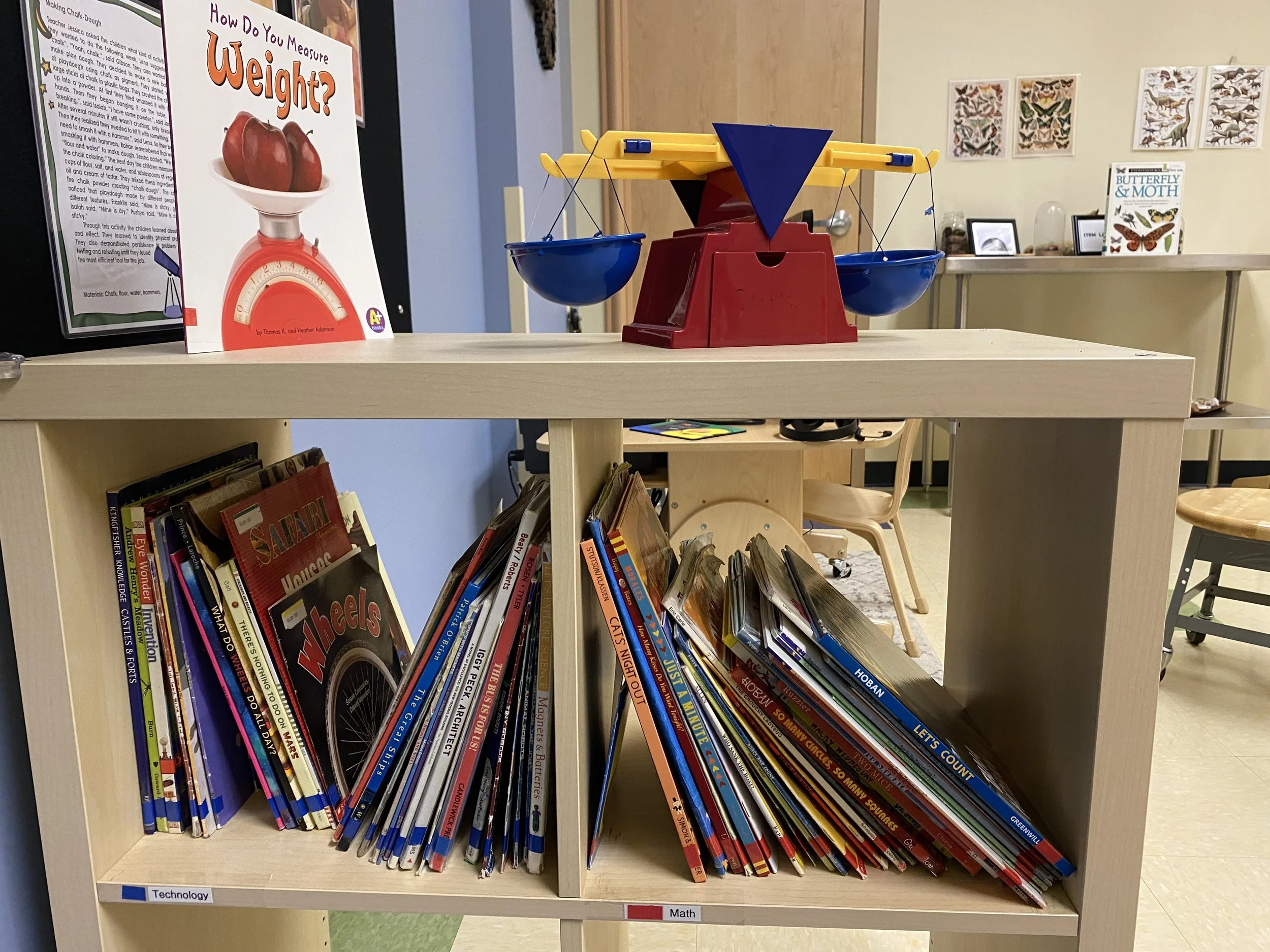“Have you seen this book? I’m sure we have like 10 copies.”
Teachers used to come to me and asked if I had seen specific books. We knew it’s somewhere, but there was no system to locate them. Sometimes, frustrated teachers would spend their own money to buy more books. Unless we had a dedicated library and librarian, we needed something that’s easy to maintain without extra person, and increase access for everyone.
Each classroom has handful of books individually
Books do not rotate, same books stay at one classroom or in teacher’s cabinet
Waste of resources and budget - possibility to have multiple same books in each classroom or hall way book shelves. No system to locate where they are.
Impossible to find the books the teachers/children’ projects/individual needs
Take up classroom space
Out of children’s reach, limited access to children
Recognizing problem & taking initiatives:
Outcome
Provided a clear library directory
ALL books color labeled and organized following easy rules
Category system provided structures for teachers to find books they are looking for
Color labeled, easy to organize (even for children!)
Utilized under-utilized spaces (STEM lab, Art studio) and increase accessibility to children by using them like small libraries.
Increased budget efficiency: easer to identify which domain needs more resources and books
Workshops & documentations provided for easy maintenance & sustainability
Higher leadership recognition
Empathize & define
Research methods: Informal interview, observation, revisiting previous centers’ systems (market audit)
Project goals: A system that..
teachers can find specific books that could help their program development, children’ project investigations and classroom needs
increase children’s accessibility
helps understanding bigger views, for budget utilization
does not require extra work loads to the teachers
utilized limited space efficiently
Ideate & execute
1. Develop a category system that teachers can utilize into classroom/program easily + provide a high-level view
Develop categories, that most often used topics/domains/forms. I referenced from market research & collaboration from the previous supervisor, which were combined ‘topic based’, ‘forms of literacy’ & age based. It also helps high-level view to prioritize to spend the budget, to see which domain needs more resources.
2. Increase children’s accessibility
Teachers were frustrated cleaning up after children read books so tend to keep them out of children’s reach, in the cabinet -> color-label the books, so that children can easily organize them after use.
Limited space -> underutilized spaces, make them into mini-specialized libraries : Art studio, STEM lab and hallway book shelves.
Teachers free up the cabinet space, by keeping books at designated area.
3. User education
Keep the process simple and easy. Document the process so everyone can have access to maintain.
Provide workshops including age, program, project specific scenarios
Locate the color coded directory on all the libraries.









